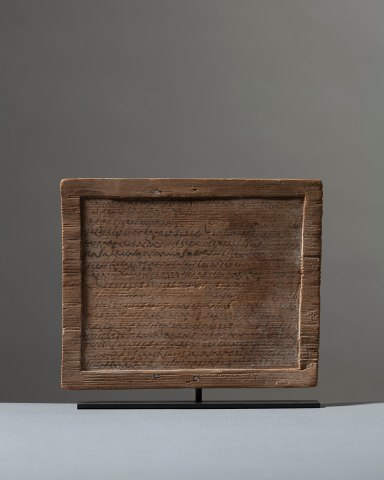To its front the thin rectangular tablet has a recessed panel with
seventeen lines of cursive text in black ink, on the reverse there
is a shallow rectangular vertical recess and a further twenty lines
of text. Pierced twice on the upper and lower edges to allow
several such tablets to be bound together.
The text shows that this is the second tabula of a testament
consisting normally of three tablets. It contains, in a highly
formalistic legal language, legacies for various persons (inter
alia a Iulia) who receive certain items, such as sheep and clothes.
The inset interior of each side would have allowed a thin layer
of wax to be melted onto the surface. Once smoothed and
dried, this acted as a reusable surface to writing. The current
example lost this wax in antiquity and subsequently the
wooden surface was written on directly. This could have been
done to preserve the importance of the writing.
Provenance
Private collection, London, UK; acquired 1975 in London, thence by descent in 1992-3Literature
Compare Pompeji Wiederentdeckt (Rome, 1993), no.52Also see the Vindolanda writing tablets at the British Museum, London. Museum numbers, 1995,0701.179 and 1980,0303.93
